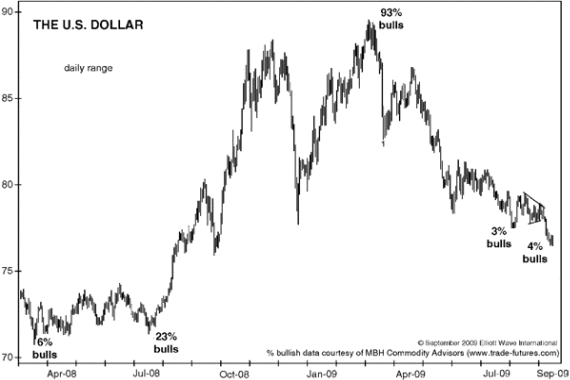Is the US DOLLAR doomed?? This chart shows the dollar over the last 18 months or so. Every headline I read these days is about "the demise of the greenback". Bearish sentiment is EXTREME at only 4% bulls. This reminds me of the situation we had in Spring of 2008. The U.S. dollar stood at an all-time record low against the euro after plunging more than 40% in value. And, according to the usual experts, the greenback was "dead"-set to meet its maker. Of course, the dollar then started a huge rally!! In my experience, the herd is ALWAYS wrong. Therefore I am betting on the greenback.


Last edited:

